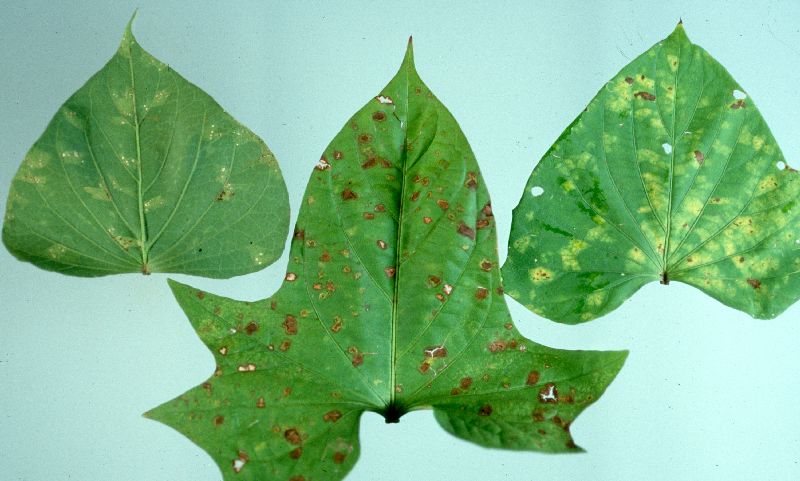|

Chlorotic patches and lesions at various stages of
development (C. Clark).

Galls
may be induced, and release white powdery spores as disease develops (C. Lopes/EMBRAPA). |
Diagnostic key
-
initially chlorotic spots of irregular shape appear. Pustules of
white spores erupt on the lower leaf surface, appearing as small pale
lesions on the upper surface.
-
Eventually the spots become angular brown lesions.
-
in some conditions, yellowish galls
are formed on leaves or stems,
which later open and turn white (masses of sporangial pustules).
- leaves may be
distorted or may fall off.
- flower abortion
may occur.
- vines may twine
while twining types may assume an upright habit.
- in some very
sensitive cultivars, witches’ broom symptoms or shortening of internodes
may be observed.
-
Found
in some parts of Asia, Caribbean, Europe, Pacific Islands, South
America and North America.
|
Taxonomy
Economic
importance
Geographical
distribution
Symptoms
Morphology
Biology
and ecology
Host
range
Detection
and inspection
Management
References
View full fact sheet
|

